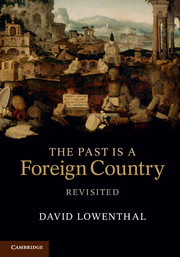Book contents
- Frontmatter
- Table of Contents
- List of illustrations
- List of permissions
- Acknowledgements
- List of abbreviations
- Introduction
- Part I Wanting the past
- Part II Disputing the past
- 4 Ancients vs. Moderns: tradition and innovation
- 5 The look of age: aversion
- 6 The look of age: affection
- Part III Knowing the past
- Part IV Remaking the past
- Select bibliography
- Index
- References
6 - The look of age: affection
from Part II - Disputing the past
Published online by Cambridge University Press: 05 November 2015
- Frontmatter
- Table of Contents
- List of illustrations
- List of permissions
- Acknowledgements
- List of abbreviations
- Introduction
- Part I Wanting the past
- Part II Disputing the past
- 4 Ancients vs. Moderns: tradition and innovation
- 5 The look of age: aversion
- 6 The look of age: affection
- Part III Knowing the past
- Part IV Remaking the past
- Select bibliography
- Index
- References
Summary
Time truly works wonders. It sublimates wine; it sublimates fame; enriches and enlightens the mind; ripens cherries and young lips; festoons old ruins, and ivies old heads; … smooths, levels, glosses, softens, melts, and meliorates all things … All [is] the better for its antiquity, and the more to be revered … Time hoared the old mountains, and balded their old summits, and spread the old prairies, and built the old forests, and molded the old vales. It is Time that has worn glorious old channels for the glorious old rivers.
Herman Melville, 1849‘I mean to go in for letting the workmen have the use of all the rooms, with liberty to smudge them as much as they like, and so at the end we shall have a sort of antique effect.’
‘They will be dirty.’
‘You may call it dirt; I call it Art.’
Robert Kerr, 1879Arrest the actions of time, while preserving its effects.
Colin Jenner, 1994Everything oxidizes over the years, including us. But viewed from the right perspective, the marks of passing time have a beauty of their own.
Costanza Algranti, designer, Livorno, 2010It is my absolute favorite thing to combine beautiful people with old, rusty, dirty settings.
Cassy Bartch, photographer, Alaska, 2009When the humanists opened their eyes to the glories of Greece and Rome, what they saw, beyond classical texts, were worn and mutilated remnants of antique architecture and sculpture. They admired these eroded fragments, not initially for their ruinous condition, but because their state of decay made them both intensely human and ripe for repair and embellishment. The classical past came to life most vividly in fresh re-creations. The time-worn fragments demanded to be to made whole again, in celebratory verse or in actual restoration. Not only did these tattered remnants inspire passion for the forms and ideas of antiquity, they enabled humanists to become co-creators, sculptors by restoring and replicating, architects by restaging in prime locales, poets and painters by portraying their trajectory from wholeness to ruin to resurrection. ‘Fragmentariness was the most crucial fact about rediscovered sculpture’, writes Leonard Barkan of the newly found (1506) Laocoön.
- Type
- Chapter
- Information
- The Past Is a Foreign Country – Revisited , pp. 241 - 288Publisher: Cambridge University PressPrint publication year: 2015

